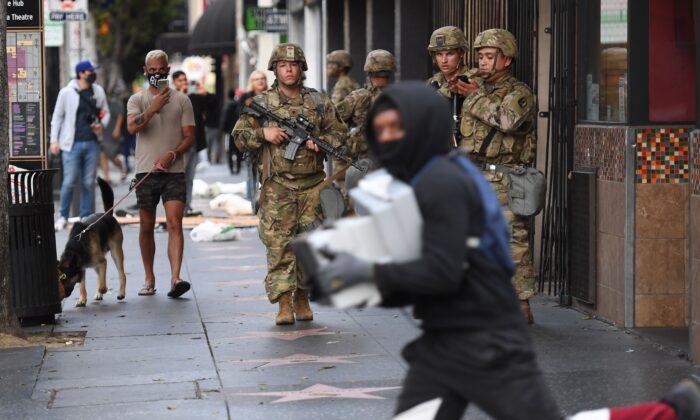As crime continues to affect communities throughout California, an increasing number of critics, among them El Dorado County District Attorney Vern Pierson, are questioning the state’s strategy in addressing the issue.
According to the 2022 report from California’s Department of Justice, the state has experienced a 6.1 percent surge in violent crimes since 2021, coupled with a 6.2 percent rise in property crimes. The data additionally indicates a nearly 10 percent increase in violent crimes over a five-year period.
“This whole thing is very interrelated, it’s very preventable, and it was directly caused by poor public policy decisions that were adopted by the state of California,” Mr. Pierson said.
Examples of such policies, he said, are AB 109 and AB 117 signed into law by then-Gov. Jerry Brown that moved a large percentage of state prisoners who were low-level offenders to county jails.
Known as the Realignment, the laws were in response to the U.S. Supreme Court, in 2011, upholding a lower court’s order that California had to reduce its prison population by a certain amount within two years.
That ruling had consequences, Mr. Pierson said.
“We made the jails more crowded, which by making the jails more crowded, it meant people got released earlier,” he said.
The decade-long effort to empty prisons was pushed forward following the peak inmate population in 2006, when more than 173,000 people were incarcerated due to tough-on-crime laws passed in the 1990s, according to the California Department of Corrections and Rehabilitation.
Between 2006 and 2018, the prison population declined by 26 percent to about 128,000. A surge of releases brought the total to a little more than 95,000 since the start of the COVID-19 pandemic, according to the corrections department. Earlier this year, Gov. Gavin Newsom announced his plan to close five more prisons by 2027.
Additionally, a significant number of the released inmates end up being homeless, Mr. Pierson said, contributing to the already substantial homelessness problem in the state.
“We’re releasing tens of thousands of them in the last three or four years,” he said. “They’re not going to a residence, they become homeless.”

Speaking from his experience as a prosecutor, such a phenomenon has also contributed to crime increasing throughout the state, he said.
“We know that disproportionately people who are homeless are victims of crime. And we know that disproportionately those homeless populations that have just been released from prison are very likely to commit new crimes,” he said. “It’s a cycle that keeps repeating itself.”
Besides having criminals on the streets, Mr. Pierson said that soft-on-crime policies adopted in recent years also played a big part in the rise in crime.
As an example, he pointed to Proposition 47, passed by voters in 2014, which raised the felony threshold for property theft from $400 to $950. The law also removed the provision for petty theft with a prior offense, which had previously enabled prosecutors to elevate charges to felonies for repeat offenders.
“Either one of those things by themselves would not have had this magnitude of effect. ... [But] combining all of these different things, you have created a culture here in the state of California, essentially increasing lawlessness,” he said. “In other words, there is no accountability for property crimes. ... If you use hardcore drugs, there’s little or no consequence for that.”
Additionally, he said that lawmakers are trapped in the idea that “poverty causes crime,” of which he disagrees.
“There is not a direct linkage between poverty and crime. The reason why you get crime is when you have told people in your culture, in your community, that you will not hold them accountable for their actions,” he said. “It’s going to be more homelessness, more crime.”







